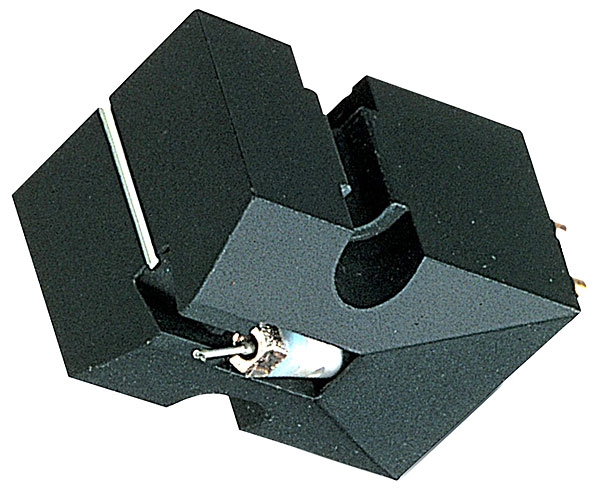This moving magnet cartridge was introduced in 1978 and sold for the princely price of £37, which was a lot of money for a phono cartridge at the time. In a world where a £25 Ortofon VMS20E was deemed lavish, most British purchasers regarded the new Rega as a high-end product. It was designed to work with the (at the time) new Rega Planar 3 turntable, but many Planar 2 buyers chose it since it sounded and performed so well in the Rega R200 tonearm that came standard on both decks.
The R100, like the R200, was made in Japan. The R100 was a Supex moving magnet made to Rega’s requirements, unlike the R200, which came from Acos. It was, indeed, a mildly modded SM-100E, and what was shocking was that the Supex-branded gadget was both more expensive and sounding worse. In any case, the R100 was infused with Supex DNA, not least in its warm, euphonic sound. Supex moving coils were obviously excellent, but the business was also adept at moving magnets, as the R100 demonstrated…
It’s built in the style of the 1970s, with a plastic body and a replaceable stylus component made of plastic. Both of the aforementioned flaws marred an otherwise superb cartridge. By overtightening many R100 bodies in the headshell of an RB300 tonearm, I managed to break them. The R100 was just not designed for the durable cartridge mounting hardware and/or powerful headshells that were popular in the 1980s. The stylus assembly was not the most rigid, and if you were feeling particularly daring, you could superglue it to the body; musically, it was a revelation, but it increased the cost of your next stylus change to £37 instead of half that!
Rega didn’t provide much numbers in terms of performance. Its frequency response was described as “from 1Hz to 20kHz plus,” with an output voltage of 4.5mV (at 5cm/sec). The latter was actually rather good for the time, and provided a great, powerful, low-noise signal to the fairly anaemic phono stage portions of many 1970s integrated amplifiers. At the phono input stage, a capacitance of 300-350pf was recommended. The elliptical ‘Super hypo cation ellipsoid’ stylus tracked between 1.5g and 2.0g; Rega was spot on in recommending 1.75g, where it grabbed the record groove like a limpet on a fishing boat. At 6.2g, the cartridge was medium mass by today’s standards (don’t forget, ‘ultra low mass’ was the current vogue).
There was something unusual about the R100’s sound that didn’t translate to Rega’s replacement, the RB100, which debuted in 1984. It had a beautiful richness to it that was lacking in all subsequent Rega pickup cartridges. In truth, it was colorful and euphonic, but it was also snappy, powerful, and unfailingly musical. Indeed, there was a fragrance of Supex SD900 in its personality; it wasn’t nearly as detailed or accurate, but there was definitely a family resemblance. The R100 had its own unique charm; it sounded like no other cartridge in its price range — with the exception of a Garrott-modified A&R P77, which had a similar fruity vibe.
The R100 sounds overly colorful by today’s standards; digital audio has reminded us how recordings should sound. The Rega cartridge is a pick-up equal to a Quad II valve amplifier; it’s a long way from neutral, but it’s incredibly lovable and enjoyable to use. Because they are reasonably rare but not in exceptionally high demand, prices fluctuate. Expect to pay between £50 and £100 for the body, but make sure it isn’t cracked. Because new stylus assemblies are no longer available, you will have to have the cartridge retipped if the stylus is worn out. The Rega R100 is another relic from the dark and distant days of the 1970s. It is now long gone but not entirely forgotten.







